Growing vegetables at home has become increasingly popular during the pandemic. Don’t let limited space or inexperience stop you from getting involved!
There are few more delightful and happy feelings than nurturing a tiny seed and watching it transform into delicious food for you and your loved ones to enjoy.
Here are a few tips to get you started.
Consider Your Growing Space

Start by considering the space available to you; Physical space, sun direction, shade, and wind will determine whether you plant in containers, raised beds, hanging baskets, directly in the ground or on a “living wall”.
Garden containers are readily available at garden centres, or you can simply upcycle old biscuit tins or any old containers you have at home by adding some drainage holes. For planting seeds, yogurt containers, toilet rolls or any small container that you can poke some holes in are all suitable.
Rather than planting only one type of vegetable in each container, you can intersperse them. This makes the visual display more interesting but also supports a diverse ecosystem in your garden. And if emerging research and old folklore are correct, this may also help you avoid some common garden pests.
Consider the Climate. It’s raining, it’s pouring…
Consider where you are based and what weather conditions are at play. I’m originally from Norway, where the last frost is much later than in Ireland. But just like in Norway, Ireland’s micro-climates vary to a surprising extent. The western seaboard gets twice the rainfall of Dublin. The risk of a late-April frost is higher in Mullingar than in Dun Laoghaire.
If you are like me and by nature don’t really pay attention to the weather very much there is no better time to start than now. What are the typical daytime and night-time temperatures where you live? How exposed is your garden to wind? These are good questions to ask before you start planting.
Most seeds like moist warm conditions to germinate so you may be better off starting off your seeds inside. Once the risk of frost is gone, which is usually sometime in May in Ireland, you can plant them outside. From then onwards it is usually also ok to plant directly in the outside soil. To be sure, just check the seed packet of whatever you are sowing.
When and Where do you Get Sun?

Vegetables, like humans, are unique and thrive in different conditions! Some like it humid and moist, while others may thrive in warm and dry conditions. Consider your space; where and when do you get sun and for how long?
Most plants do better in sunny conditions, so be careful about shady corners. Best to leave that shady space for your new trusty companion, the watering can, to collect rainwater.
What Do You Like to Eat & Share?
There is no point in growing radishes or tomatoes – no matter how easy they may be – if you don’t like them or can’t share them with someone that does. Think about the type of food you and your loved ones like to eat and let that guide the way. Below is a list of a few easy crops to get started with.
Salad Leaves

Fast growing and delicious straight from the garden. If you pick only one thing to grow, let it be salad leaves. Simply get a packet of seed, sprinkle them in some good compost, cover it and keep it moist. They can be succession seeded (staggered planting instead of planting all seeds at once) and grown from March until September giving a good supply all summer long.
Good varieties to get started with include Mustard, Oriental Salad, Rocket, Perpetual Spinach, Cress, and Webbs Wonderful to name a few. It all just depends on your taste.
Radishes
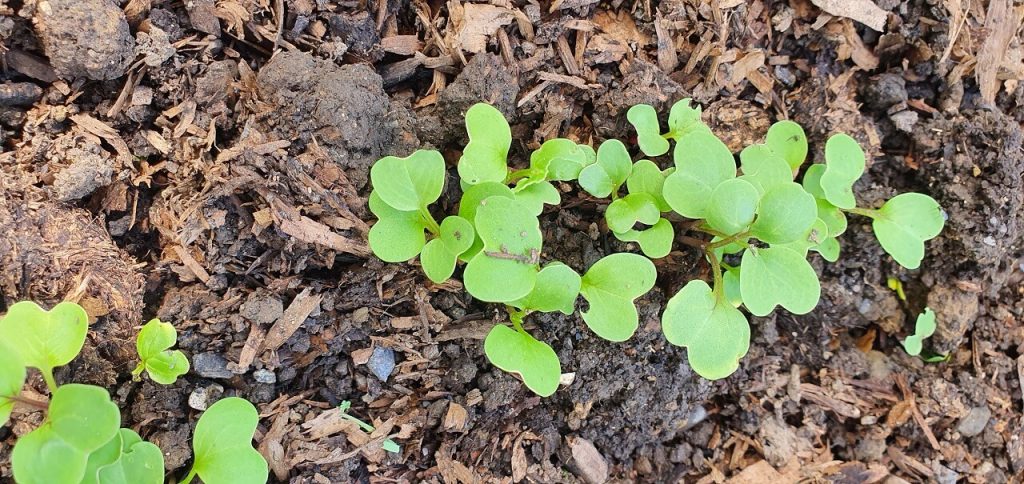
Similarly to lettuce radishes are fast growing and very nutritious. Common varieties include Sparker, Cherry Belle, Fire and Ice. Succession seed and grow from March to August.
Tomatoes

Tomatoes are one of the most fun, rewarding and tasty vegetables (or are they a fruit?!) to try at home. And I have a particular love for uncommon varieties. There are a huge variety of tomatoes to grow, especially if you choose to grow from seed – which you can just about get away with now. For small spaces grow small bush varieties such as Tumbling Tom Red, Maskotka or Outdoor Girl.
Make sure they are in a sunny, sheltered place in your garden. If you don’t want to grow from seed just pick up transplants which are readily available at the moment. Once they start to flower give them a weekly tomato feed. You can make this from nettles or seaweed or simply buy it from your local garden centre.
Potatoes
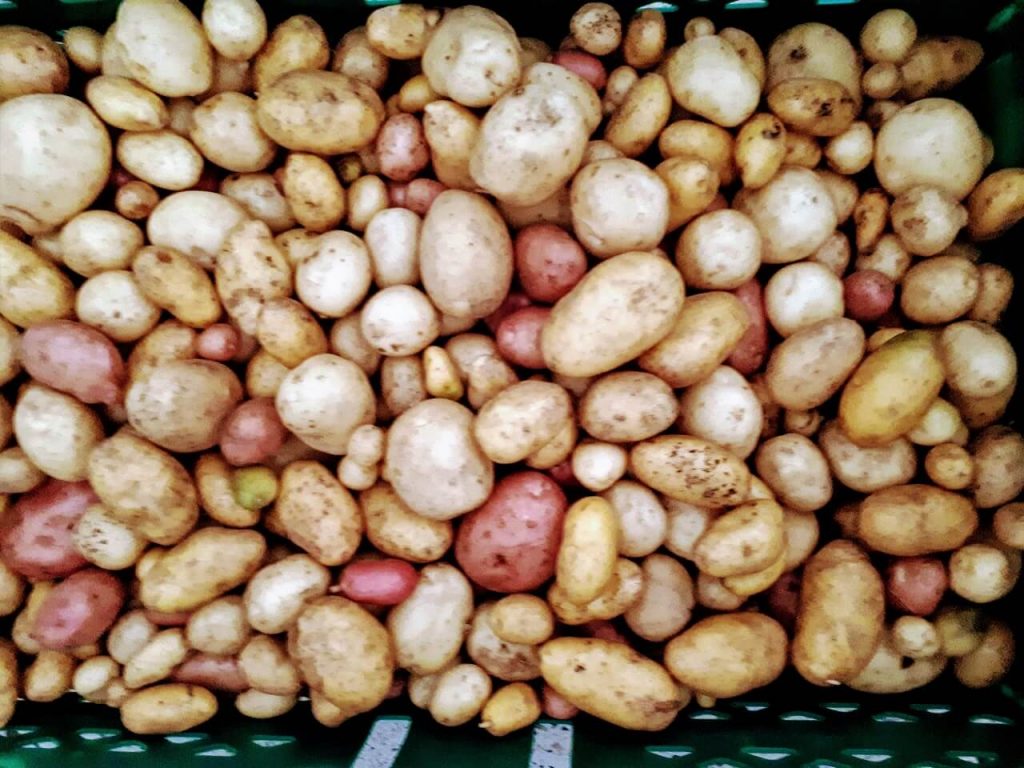
Growing potatoes in containers has become increasingly popular. Small salad potatoes varieties grow very well in a container. Plant seed potatoes into fertile, moisture-retentive but free-draining soil, strong sacks or large tubs. Varieties such as Orla and Salad blue are delicious, small potatoes.
Herbs
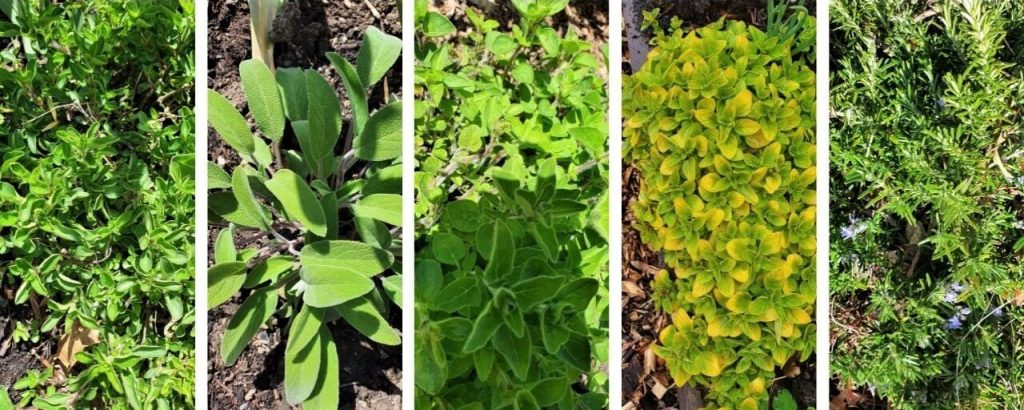
Herbs, such as Parsley, Coriander, Sage, Rosemary and Basil (my nemesis, more on that below) are useful and usually easy to grow.
Most herbs like warm moist conditions so a sunny windowsill is the best place to start them off in Ireland. I have had limited success with Basil and Coriander in the last year, but I love eating them and will keep trying!
Peas & beans
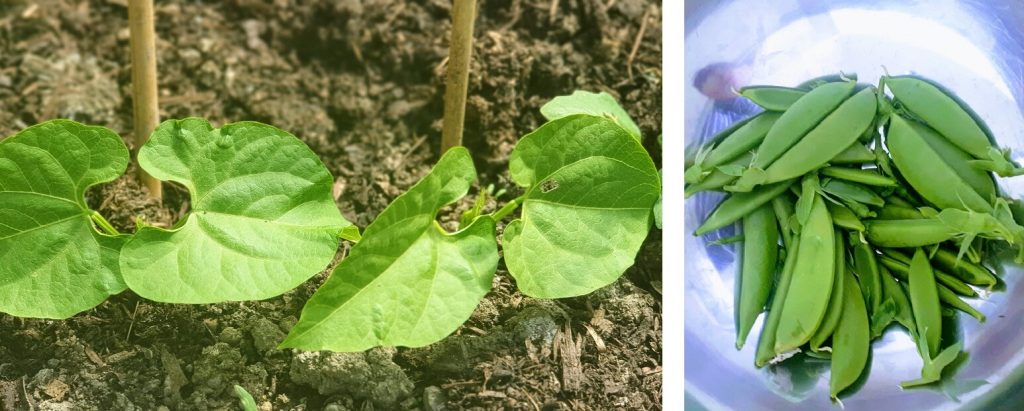
Fast-growing, beautiful and productive – the more you harvest the more they produce. Good varieties for smaller spaces include Dwarf Cobra beans, Annabel, Safari, and Kelvedon Wonder.

Spring Onions
Just sprinkle the seeds and cover with about 1.5 cm of moist compost and soon you will have plenty of spring onions.
Fruit Bushes
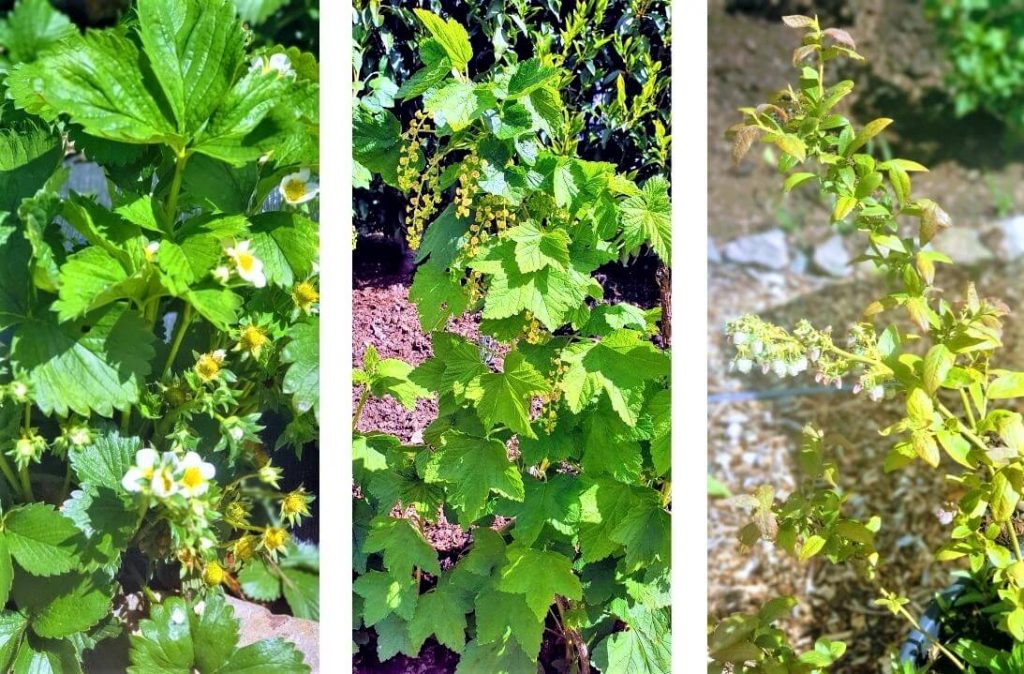
You will not grow a fruit bush from seed but if you have a larger container I would highly recommend adding it to your garden. Consider red, white or blackcurrant, strawberries, blueberries, gooseberries, whichever ones you like best. This will give you lovely fruits to eat, for jams or cordials for years to come.
What are you waiting for?

The final essential for growing your garden is compost or black gold. If you have made your own, brilliant. If not, go to any good garden centre and pick up a bag of seed compost.
Good seed suppliers include greenvegetablesseeds.com, quickcrop.ie, mrmiddleton.com, seedaholic.com or your local garden centre. But if you don’t fancy growing from seed, most good garden centres sell small common vegetable plant transplants to get you started.
Now the only thing left is to decide what to grow, get your hands dirty and enjoy what nature brings you!
About the Author:
Renate is originally from Norway but has called Ireland her home since 2003. Lifelong lover of nature, plants, flowers, and gardening. Renate’s current project is to become self-sufficient from her family’s own vegetable garden with the help of her husband and 4 kids.





